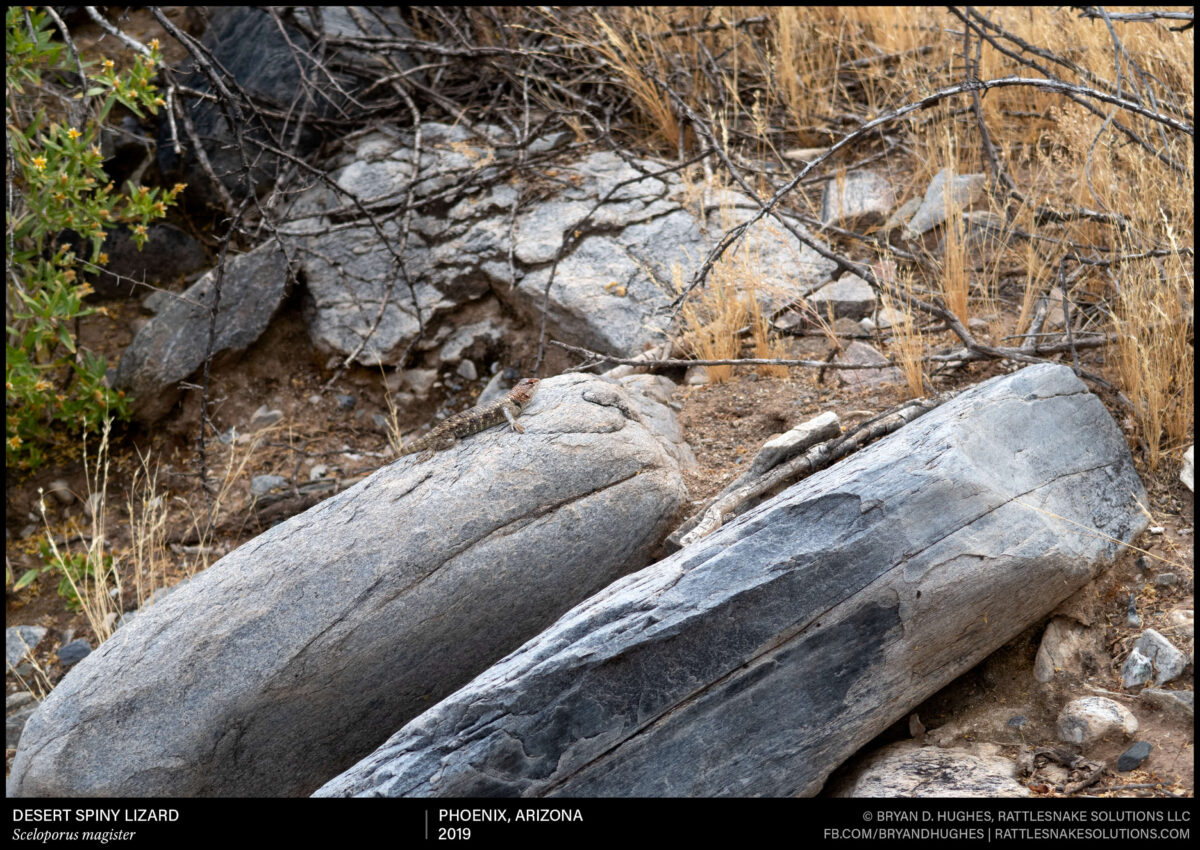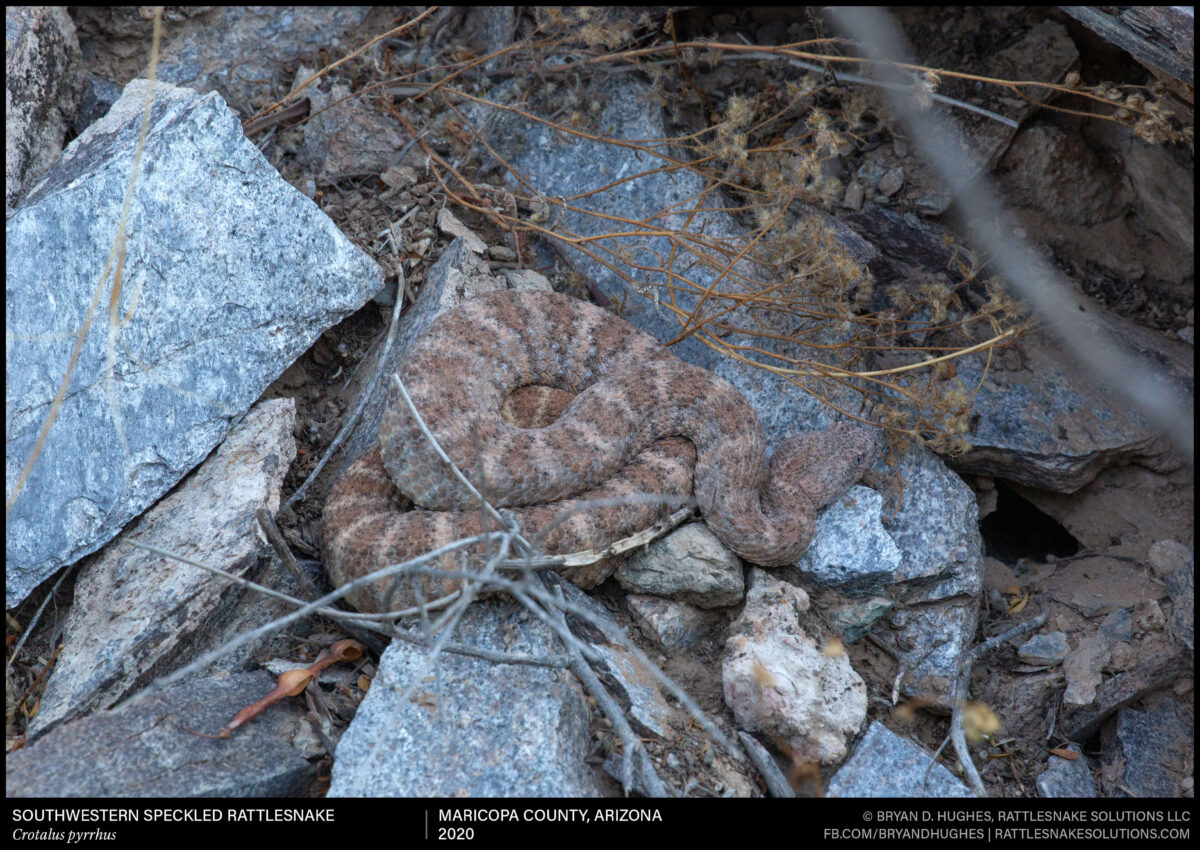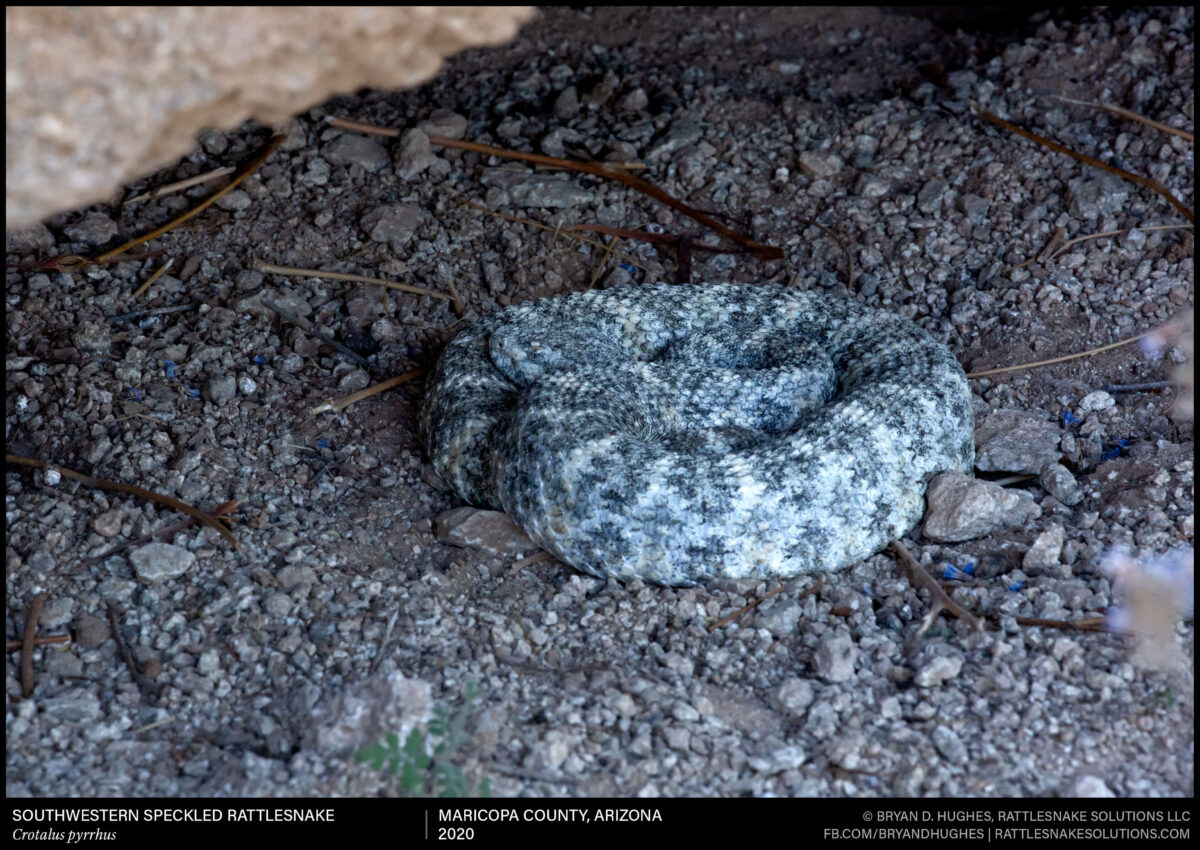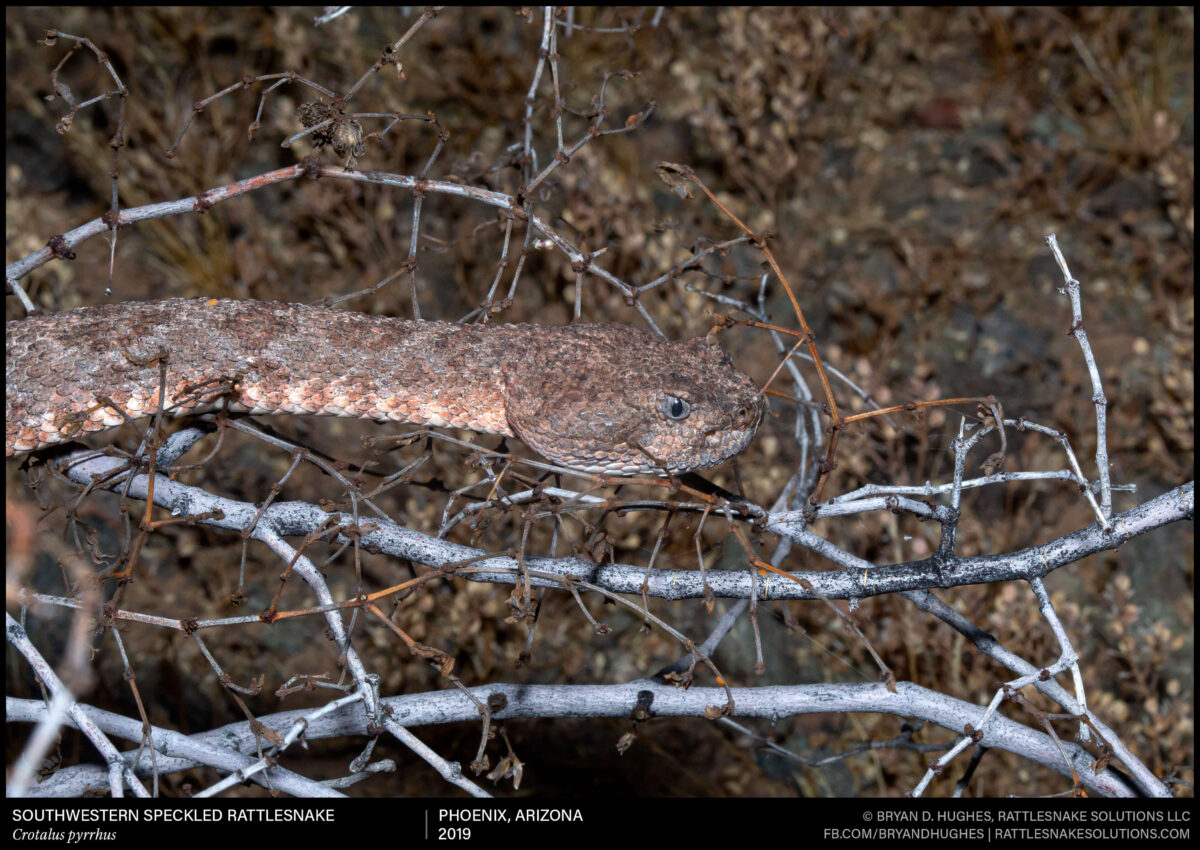This Desert Spiny Lizard watched me from a rock, ready to dart to cover if I came any closer. These colorful, relatively large lizards are a common sight in desert parks and stucco jungle around Phoenix.

Despite being incredibly easy to observe in surrounding mountain ranges, the Southwestern Speckled Rattlesnakes in the Sierra Estrella just southwest of Phoenix are harder to spot. They’re likely just as common, but the steep terrain and majority of prime geology for the species being inaccessible reservation land make it a challenge to see one. Kris Haas spotted this pretty one way up mountain.

A Southwestern Speckled Rattlesnake resting outside its aestivation den, which it shares with several others to wait out the hottest, driest time of summer.

A Southwestern Speckled Rattlesnake hiding from the sun near the entrance of a shallow cave in south Phoenix. During the springtime, this species can be found even relatively far from its rocky habitat, hunting birds and lizards at the base of creosote. This caliche cave, which is also the occasional home to a Sonoran Desert Tortoise or two, is about as far from its winter and summer preferred homes as it will get in the year, nearly a quarter mile from the nearest sizable rock.

The blue-grey eyes of a Southwestern Speckled Rattlesnake stand out against its red and grey body. This is a typical look for the species as they are found in rocky areas of central Phoenix. This snake carries a small passive radio transmitter that helps us learn about its life in an urban park.

A Blacktailed Rattlesnake we found on a late night hike of a canyon near Phoenix, Arizona. These are common snakes in mountainous regions, often seen by hikers. During the summer in desert areas, they are often most often nocturnal, usually encountered around sunup and just after dark. This one, fortunately, lives far from where people may come across it on accident.

A Blacktailed Rattlesnake was seen on a late-night hike near Phoenix, Arizona. These snakes are found in any of the regional parks around Phoenix and Tucson. Interestingly, they are missing, however, from the mountains of central Phoenix, with no records that indicate they were ever there.

A Southwestern Speckled Rattlesnake making it difficult to tell where snake ends and rock begins.

A Southwestern Speckled Rattlesnake as they typically appear around Camelback Mountain in central Phoenix. It’s a surprise to many that multiple species of rattlesnakes are still present within a heavily populated urban area, but they continue to thrive there. Excessive heat from a surrounding sea of pavement makes life difficult in the summer, however, which often leads to encounters at adjacent homes with rattlesnakes looking to cool off in the lawns and citrus oasis of Paradise Valley.

A Southwestern Speckled Rattlesnake looking just like a chunk of granite, fallen off the overhead outcrop. As the sun gets lower in the sky, a variety of rodents, birds, and lizards do what they do in surrounding bushes and rocks, oblivious to the invisible predator. To hikers on the mountain, they’re often just as cryptic, remaining hidden as hundreds of feet pass by every Saturday on popular trails.
